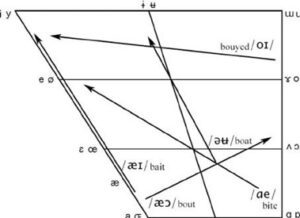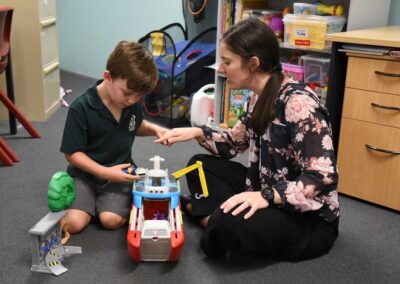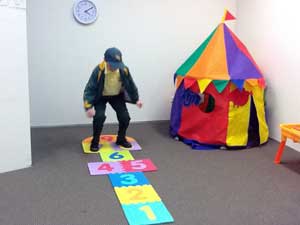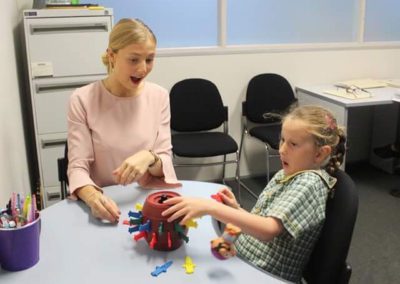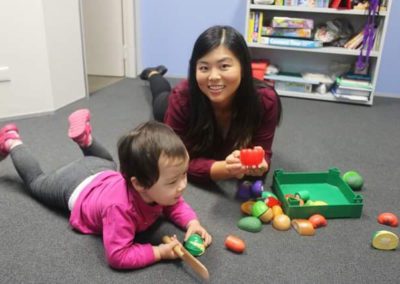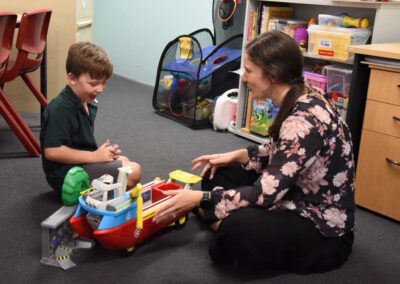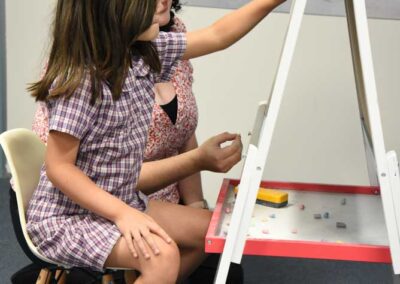As a trained Speech Pathologist you may feel relatively confident and comfortable treating speech sound errors. However, much of the training you received on articulation therapy probably focused on consonant sounds. You may feel less confident in working with vowel errors, even though many of the clients you work with are likely to experience difficulty producing vowel sounds accurately. This blog will help improve your understanding of how vowel sounds are produced and how to correct vowel articulation errors.
How are vowels produced?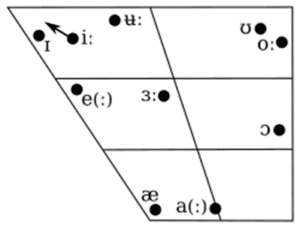
In order to know how to treat vowel errors, you first need to have an understanding of how vowel sounds are produced. You have very likely seen the vowel chart in your studies but may not understand how to use it practically when working with a client. It’s actually pretty simple to understand. Imagine the chart as representing your mouth with the vowels on the left side being said by using the tongue tip near the front of the mouth, the vowels on the right side produced at the back of your mouth and those in the middle being produced in the middle of the mouth. The height of the chart represents jaw height, with vowels at the top of the chart being produced with limited jaw height (i.e. mouth almost closed) and those at the bottom of the chart being produced with a lower jaw height (i.e. mouth open). We refer to 4 jaw heights starting at the top with jaw height 1 and the bottom being jaw height 4. The other important feature of vowels is lip spreading and rounding. The vowels produced at the front of the mouth are generally produced with spread lips and those produced at the back of the mouth are generally produced with rounded lips. Vowels at the bottom of the chart (i.e. those with a low jaw height) do not have lip rounding or spreading. This is because you can’t get much lip movement when your mouth is open wider.
Therefore, the i: vowel (as in ‘eat’) is a high, front vowel with lip spreading. The Ͻ vowel (as in ‘got’) is a back vowel with a jaw height of 3. The æ vowel (as in ‘at’) is said towards the front of the mouth with a low jaw (jaw height 4).
How to correct vowel errors 
Once you know the features of a vowel, you can figure out how to correct an error. Look at the features of the vowel that the child is producing and the features of the target vowel and determine what the differences are. You will provide prompts according to these differences. For example, if a child says ‘bad’ for ‘bed’, the error sound ‘æ’ is a mid-front vowel with a jaw height 4 and the target sound ‘e’ is also said towards the front of the mouth, but with a jaw height 2. The main different between these vowels is the jaw height, so that is what you will cue. You can tell the child to make a smaller mouth and give visual & tactile cues to demonstrate the correct jaw height. Looking at another example, a child may say ‘buckit’ for ‘bucket’. The error sound is ‘ɪ’ which is a high, front vowel said with lip spreading and the target sound ‘ə’ (schwa) is said in the middle of the mouth. The main difference is a slightly lower jaw height and no lip spreading. You can also prompt for tongue placement further back if you have PROMPT training.
Diphthongs
Often children with severe speech sound disorders will struggle to say diphthongs correctly. A diphthong is a vowel with 2 parts. The sound begins at one vowel and moves towards another vowel. For example, the diphthong /oɪ/ (as in ‘toy’) starts at the /o:/ vowel (as in ‘corn’) and moves to the /ɪ/ vowel (as in ‘bit). Another example: the diphthong /æɪ/ (as in ‘bait’) starts at the /æ/ vowel (as in ‘cat’) and moves to the /ɪ/ vowel (as in ‘bit). When children struggle with diphthongs, they tend to say only one part, usually the first part. For example, a child might say ‘bor’ for ‘boy’ or ‘pan’ for ‘pain’. To correct this, you need to teach the child to say the second part of the diphthong. It’s usually easier to start with words that have the diphthong at the end e.g. play, tie, toy, bow, etc. and then onto words where the diphthong is in the middle of the word e.g. ‘make’, ‘time’ ‘coin’, ‘boat’ etc.
In conclusion, it’s essential that we target vowel errors as well as consonant errors when treating speech sound disorders. To do this effectively, you need to understand the features of the target vowel, as well as the error vowel. Targeting an individual’s vowel errors in therapy is essential to improve overall intelligibility and foster good communication skills. Addressing these errors can lead to increased confidence in verbal expression and foster better social interactions.



